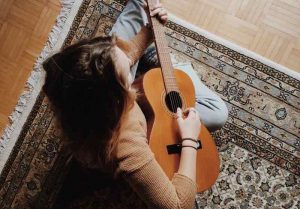What a crazy year 2020 has been! The pandemic certainly threw a wrench in many of my musical plans. When unexpected events cancel concerts, recitals, and collaborations it can be very easy to lose motivation. We can feel helpless, disorganized, and out of control. It is so easy to adopt the mindset of: if you don’t have live performances to practice for, why practice at all? The key to removing yourself from this downward spiral is to focus on what you CAN control. Just because you may have to alter your musical goals for 2021, doesn’t mean you shouldn’t set them. In this article, I’ll show you how to set music learning goals that really stick.
No matter what external circumstances or events beyond your control may occur, you should set specific long term, medium term, and short term musical goals to improve your skills on your instrument. The key is to be able to see your goals on the macro, and micro level.
Simply wanting “to get better at the oboe” is too vague
Take some time to think about what skills, tasks, or processes “getting better” at the oboe (or whatever your instrument may be) entail. For example, getting better at the oboe might involve playing in tune more consistently. Then ask yourself what do I need to do to improve my intonation? You’ve identified the skill you need to acquire, now determine the process you need to master that skill. Playing long tones with a tuner and slow scales with a drone are excellent ways to improve your intonation.
Use specific, time-bound goals
So, now that you’ve determined what you need to improve and how you’re going to do it, it’s time to set some specific, time- bound goals to keep you progressing. If your yearly goal is to improve your intonation, then you set a monthly goal of playing consistently in tune in the low register. Be sure to define what “consistent” and “low register” means to you.
It may seem painstakingly neurotic, but the clearer you are in defining your goals, the greater the likelihood that you will successfully achieve those goals. In this case, I would define “consistent” and being able to maintain play a specific pitch in all dynamic ranges without going sharp or flat. I would define “low register” on my instrument, the oboe, as from F#4 to Bb3.
Now, break it down even further
Now that you have set your yearly and monthly goals, break it down further into weekly and daily goals. If my monthly goal is to improve the intonation of my low register, then my weekly goal would be to master the intonation of five notes in the range of the instrument and my daily goal would be to master the intonation of one note in the range of the instrument. For example, weekly goal intonation goals: F#4, F4, E4, Eb4, D4 in tune in all dynamic ranges. Daily goal for Monday: F#4 in tune in all dynamic ranges. You get the idea.
Taking the time to set yearly, monthly, weekly, and daily, music learning goals may seem intimidating at first but it will streamline your practice. Specific goal setting is empowering. Once you establish the habit of setting these goals, you will realize how much control you have over your own progress. You will be more productive and more efficient. Going into each practice session with a plan maximizes your time and gives you the peace of mind that you know exactly what you have to do to achieve your goals.
Clara Blood


